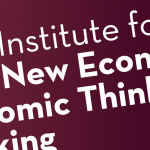As analysts across the industrialized world contemplate the political consequences of anemic long-term growth patterns, media and policy conversations are showing renewed interest in the question of whether the fiscal austerity policies shaped by orthodox economics are themselves helping restrain growth.
Writing in the New York Times, Eduardo Porter notes that the 2% annual GDP growth that has characterized the Obama recovery may be a long-term pattern under present conditions. Citing Harvard President Emeritus and INET conference participant Larry Summers, Porter notes “Unless business and government do something to improve the economy’s underlying capability, the United States will be lucky to achieve even that paltry growth rate over any sustained period of time.”
Some research, Porter reports, suggests that even the Congressional Budget Office’s modest prediction of 2 percent growth over a ten-year period is excessively optimistic, and that “over the next five years, labor force growth of half a percentage point plus productivity growth of half a percentage point will push the economy ahead at the anemic pace of just 1 percent a year.”
The Institute for New Economic Thinking has several studies in progress on this and closely related questions, including papers on possible “secular stagnation” and the contentious question of how aggregate demand affects supply. The Institute has also published a number of papers that shed new light on why growth rates have been so slow. Especially notable among these are the studies by William Lazonick and his colleagues on how financialization and stock buybacks have changed how firms function and the role basic research plays in US growth. Papers and blogposts derived from the work of Lazonick and his colleagues are available here.
Also of interest is the acute study by Mario Seccareccia and Marc Lavoie of what conventional treatments of the Great Recession have missed.
A closely related question concerns the validity of the Phillips Curve relationship between inflation and employment. On this score, Antonella Stirati offers a rigorous discussion of a recent paper by Olivier Blanchard.
It’s also worth revisiting James K. Galbraith’s insights into past forecasting errors, offered in the context of a debate among economists over how to assess the impact of policies advocated by presidential candidates.
The growing global interest in fiscal alternatives among policy makers and the informed public is a welcome reminder of the value added to that conversation by the Institute’s research. Hopefully we’ll soon have more to offer.






